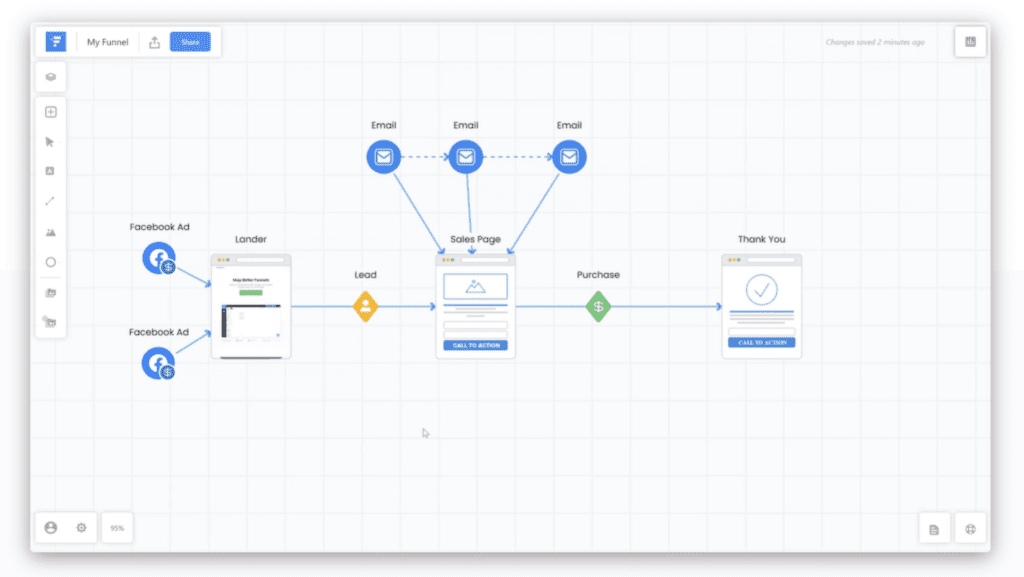9 Customer Journey Analytics Examples (+3 Tools for Better CX)

by Mikael Dia

March 12, 2025




When running a business, you’re bound to deal with customer issues. The quicker you resolve them, the happier your customers will be.It’s no wonder then that top organizations invest in customer journey analytics as their 2nd CX-related priority, after digital engagement.Using tools to view the customer journey as a whole, you also get detailed insights into how your customers interact with your brand and understand what motivates them to take action.The result? You unlock strategies to improve your customer experience (CX), enhance your customer retention rate, and remedy bottlenecks in your customer journey map.This article walks you through nine examples of using customer journey analytics effectively to improve your customer journey processes and drive business growth.
Not every customer follows the same journey.Chances are, some may have found you through a Google search or discovered your ad on Facebook. Similarly, some customers prefer to engage with your brand through your blogs, while others are more interested in checking out your social media accounts.You’re probably already mapping the journey your customers are taking. But how do you squeeze quality results from your analytics?“Customer journey analysis gives visibility on all levels of the customer journey. It makes it easier to propose improvement plans and have the decision makers on board with the changes.” —Adrienn Szilagyi, Global Customer Experience Project Manager at NIHere’s how to examine customer journeys across multiple touchpoints and use your findings to optimize your CX.
Paid ads can bring tons of traffic and conversion for your business if leveraged properly. You need to make sure they’re well-optimized (in terms of copy and design), have an engaging landing page, and target the right kind of audience.More importantly, you need to understand what works for your target audience—the tone that clicks with them, the benefits that appeal to them, and the experiences that matter to them.A customer journey analytics report helps you break down your ad campaigns step-by-step, and track and analyze the conversions and return on investment (ROI) throughout the journey—from the landing page to the pricing page.Let’s say you’re getting many clicks on your display ads, but the bounce rates are equally high. This means your audience is looking for the specific keywords your ad is ranking for, but they aren’t finding your landing page relevant.
When you’re looking to make data-driven decisions for your business, mapping customer journeys throughout the customer lifecycle is crucial.This is something Four Sigmatic—a subscription-based ecommerce brand—struggled with. To drive better decision-making, they wanted to understand their customer journey better.They were using multiple tools, such as Google Analytics and Data Studio. Still, they didn’t know which customer journeys were helping their business.So, they turned to Funnelytics, a customer journey analytics tool that helped them see their customer journeys more clearly while making other tools redundant.
When building a business, make sure you’re targeting customers who are in it for the long haul and see value in your offerings.Using customer journey analytics, you can segment customers based on their demographics, behavior, and interests.Doing this, you gain insight into how prospective customers are more likely to behave while interacting with your brand. Then, you can apply appropriate strategies to convert them.Let’s consider an example.Say you’re a fitness apparel and equipment retailer. To identify your target audience, you’d track metrics around website visits, interactions on social media, purchase history, and demographic information about your customers.Using customer journey analytics, you’d then identify patterns and trends in specific customer segments. For example, you may deduce that customers reading blog posts about marathon training are more likely to be interested in high-performance running shoes.
Not all customers are equally motivated. Some make only one-time purchases and never return. However, some customers will find your product useful, feel connected to your brand, and see a long-term association with you. The latter is the kind of customer you want to focus on and improve your interactions with them.The best way forward is to determine how much money each customer makes the business and identify the most profitable ones. This is where a customer journey analytics tool will get you a detailed and quantitative picture of the entire customer journey.Once you’ve found your ideal customers, find ways to make them even more happy. Group them into a separate segment and proactively engage with them.
Cross-selling and upselling account for up to 30% of sales revenue. That’s according to 500 surveyed sales professionals. A reported 72% of those who upsell and 74% who cross-sell saw these gains.A classic example of cross-selling and upselling is seen in retail and hospitality. Hotels and resorts often leverage loyalty programs to convert an existing customer into a higher-paying one.To place these up-selling and cross-selling offers in your customer journey map, you need to understand the high points. These could be touchpoints where customers are responding really well or areas where customers could use an upgrade. Customer journey analytics helps identify these.For example, banks may use customer journey analytics software to figure out the channels their customers respond positively to when learning about their new credit card offerings.Say people respond positively to emails instead of text messages. As a result, they’d decide to invest in this channel and send personalized email campaigns to prospective customers.
Customer churn can significantly impact your revenue, especially if you’re a subscription-based business. This is why most top enterprises (including SaaS businesses) and small and medium businesses (SMBs) aim for an annual churn rate of below 7% and approximately 20%, respectively.However, with multiple touchpoints between you and your customers in different funnel stages, it’s hard to know the exact trigger that influenced a customer’s behavior.This is where customer journey analytics helps you map their end-to-end journey and discover loose ends in your sales process.“Review customer feedback, and ask for feedback from teams working closely with the customers. Identify the top five pain points and check the level of effort that is needed to resolve these. Start with the most impactful one in the customer journey (supposing there is enough internal capacity to resolve it in a shorter amount of time).” — Adrienn Szilagyi, Global Customer Experience Project Manager at NI CashorTrade—a website that allows people to sell and trade concert and event tickets—struggled to understand why their website visitors were leaving without buying tickets.They had access to analytics data from different platforms such as Facebook Ads, Google Ads, and Google Analytics, but they couldn’t consolidate their findings from this scattered data.They used CX analytics to gather all the data from different sources and collect them in one place.
Loyalty programs are an effective way to retain customers and elevate your brand’s reputation. In its CX 2023 report, Zendesk notes that 52% of loyal customers will go out of their way to buy from a brand they admire.But it’s not enough to just have a loyalty program, you need to understand if it’s delivering the desired results. That’s where customer journey analytics data comes in—helping you to optimize your loyalty program for better results.Here’s how.
For example, SaaS businesses can segment their users based on their level of engagement with the organization. Let’s call them power users and casual users.Since power users are more engaged and more likely to upgrade their purchase, you can offer them access to premium features or priority customer support in the loyalty program.For casual users, the company can offer incentives like extended free trial periods or discounts on upgrades.
Customer journey analytics helps you understand how customers interact with your business across channels like your website, mobile app, or social media. You can see all their steps—from discovering your product to purchasing it.You can pinpoint the platform where users are leaving without taking action and the issues causing it—like slow loading time, glitches, or confusing navigation.This allows you to look deeper into that platform’s design, user interface, and functionality, and improve them.
In a 2020 Wyzowl report, 55% of surveyed customers admitted to having returned a product that they didn’t understand how to use. This goes to show that no matter how effective and useful your product is, if your customer isn’t actively using it, you’ve already lost the battle.So get them onboarded right, and use customer journey analytics to optimize the process. Monitor metrics such as abandonment rate, success rate, and the total number of interactions.This will help you understand how many customers have successfully completed their onboarding journey and how many are stuck or facing challenges.Here are a few metrics to track:
Use these data points to identify the problems in your onboarding process and fix them.Say you run a mobile banking app, and through customer journey analytics, you discovered the point where most users were dropping off—while linking their bank accounts.This is your chance to reduce the friction of this process and ensure your users feel safe about linking their accounts.
Now that you’ve read some use cases for customer journey analytics, it’s time to delve into some best practices.“Make sure you have tools in place to measure the customer experience be it via surveys, etc. Measure the first contact resolution rate, the volume, and the length of interactions.” — Adrienn Szilagyi, Global Customer Experience Project Manager at NI
A great way to identify friction points and gain overall CX insights is to ask customers for their opinions at various touchpoints. These touchpoints could be:
You can ask them to rate their shopping experience or provide their feedback on the quality of items they purchased.
By gathering and analyzing this data, you may find recurring themes and issues at specific touchpoints that might be causing frustration for customers.
Ask yourself this question: Are you making the customer journey smooth or complex by adding unnecessary steps? Extra steps and complexity will only lead to frustrations and drop-offs.For example, if you ask your users to create an account on the last purchase step, it could frustrate them and lead to more abandoned carts.
Analyze how long it takes for customers to take your journey and whether they’re happy about the steps they have to go through to make the purchase decision. Surveys and customer interviews are a great way to do this.Also, track how many of them stick till the end and take the desired action. This will help you optimize your customer journey, fix issues, and remove roadblocks.
If your analytics data is still separated into different tools, you’re only seeing part of the picture at any given point. As a result, you’ll have difficulty accessing and analyzing it. A best practice here is to integrate all this data into a unified view so you can begin a complete analysis of CX across different journeys.



Positive customer experience is the key to building a successful business. By gaining insights from customer journey analytics, you can track the most important metrics and make data-driven decisions.
Funnelytics helps you visualize these metrics in real time in a single canvas, and pinpoint the areas needing improvement.
Plus, you can centralize all your analytics data in Funnelytics, and ditch those manual and time-consuming analytics tools.
Sign up for a free trial today

Founder & CEO @ Funnelytics Inc.
Sign up for your free 14-day trial today and experience all the benefits Funnelytics will bring to your business first-hand. No contracts. No commitments. Just full-on customer journey insights.